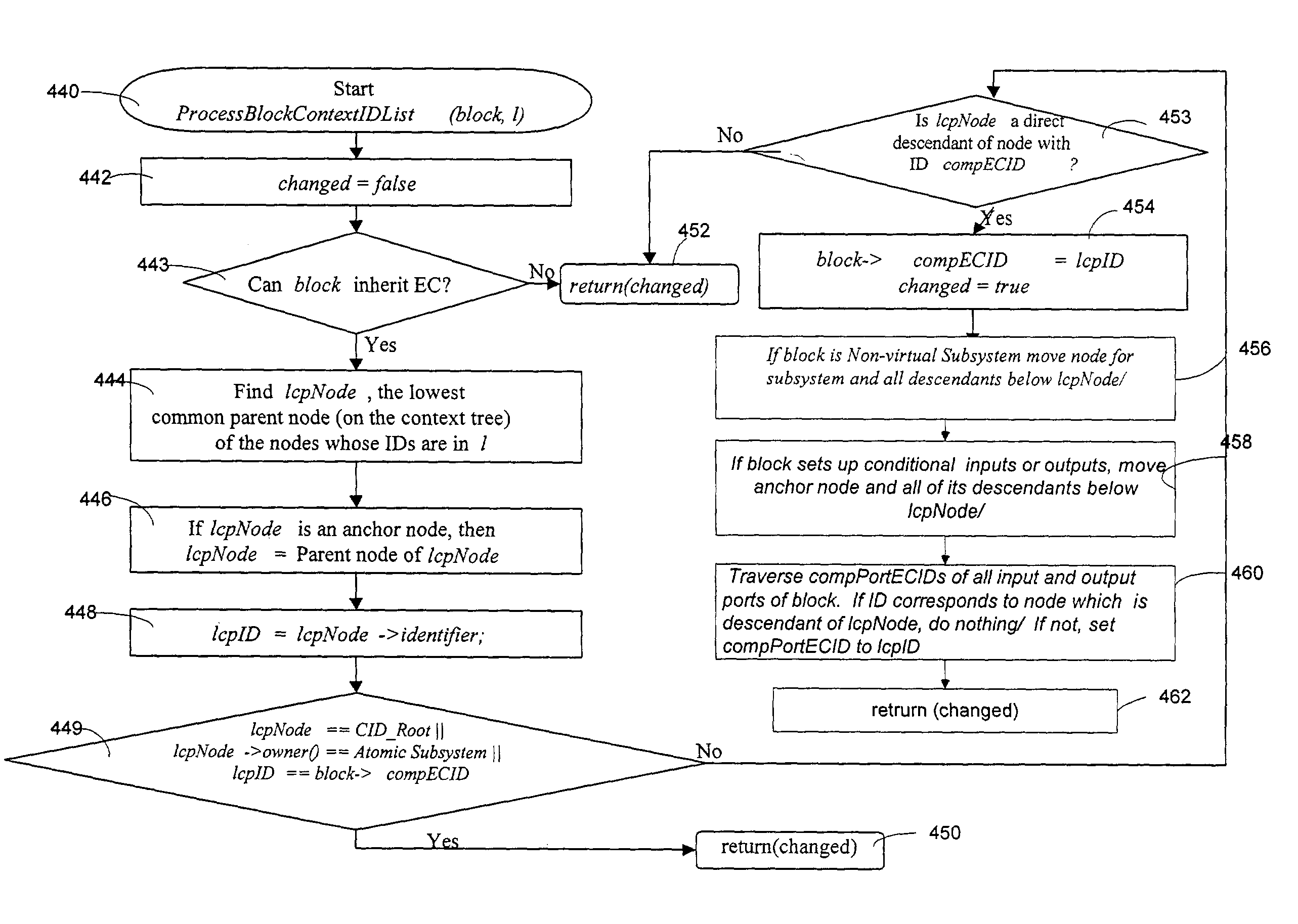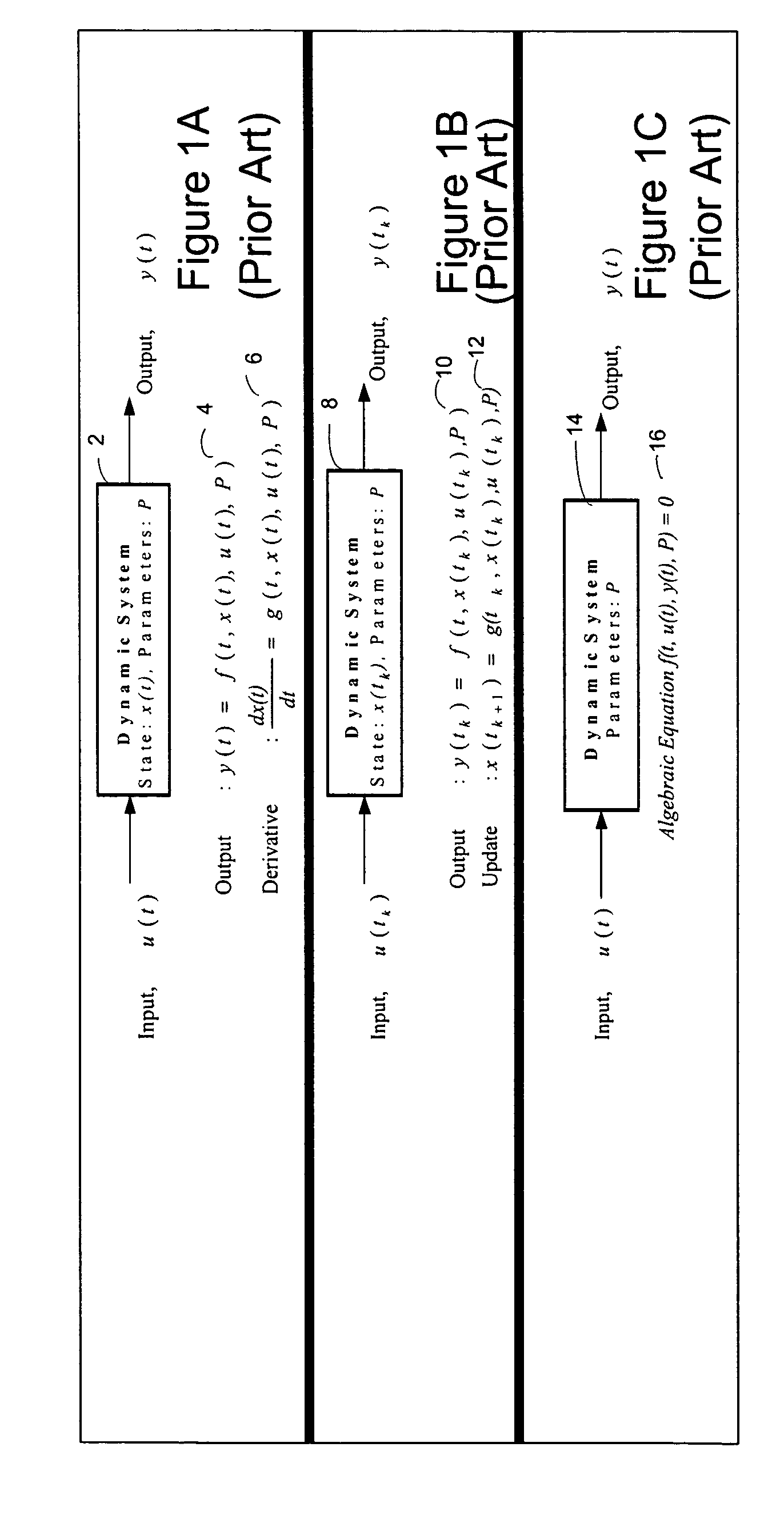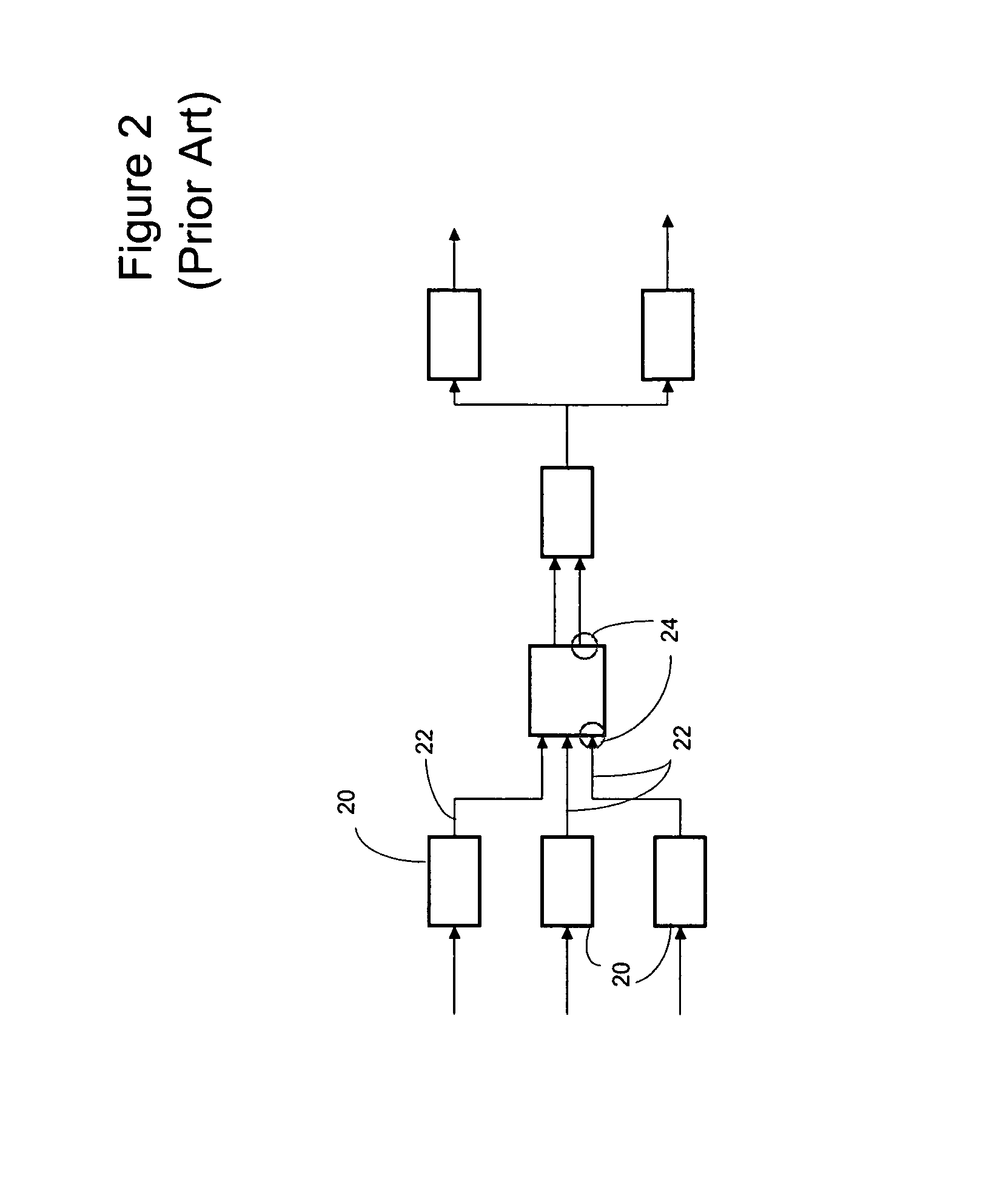System and method for using execution contexts in block diagram modeling
a block diagram and execution context technology, applied in the field of block diagram modeling, can solve the problems of inconvenient use, inefficient and inaccurate, and non-modular design that discourages the use of multiple programming design groups
- Summary
- Abstract
- Description
- Claims
- Application Information
AI Technical Summary
Benefits of technology
Problems solved by technology
Method used
Image
Examples
example revisited
CONDITIONAL INPUT EXAMPLE REVISITED
[0218]FIG. 15 showed a block diagram with conditional inputs 262 and 266 for a switch 260. The Sorted Lists for the block diagram before and after the use of Execution Contexts for the block diagram may be shown as follows:
Sorted List without Use of ECs
[0219]In1[0220]Gain[0221]Abs[0222]Gain1[0223]Sum1[0224]In2[0225]In3[0226]Log[0227]Gain2[0228]Reciprocal[0229]Gain3[0230]Sum2[0231]Switch[0232]Out1
Sorted List with Use of ECs[0233]In1[0234]In2[0235]In3[0236]Switch[0237]Sorted List for Input Port 1:[0238]Gain[0239]Abs[0240]Gain1[0241]Sum1[0242]Sorted List for Input Port 2:[0243]Log[0244]Gain2[0245]Reciprocal[0246]Gain3[0247]Sum2[0248]Switch Body[0249]Out1
It should be noted that when ECs are used, the Sorted List is hierarchical and the Switch block has two Sorted Lists, one each for the ECs it sets up on its input ports. The generated code for the same model before and after the use of ECs may be shown as follows:
Generated Code when ECs not Used:
[0250]...
PUM
 Login to View More
Login to View More Abstract
Description
Claims
Application Information
 Login to View More
Login to View More - R&D
- Intellectual Property
- Life Sciences
- Materials
- Tech Scout
- Unparalleled Data Quality
- Higher Quality Content
- 60% Fewer Hallucinations
Browse by: Latest US Patents, China's latest patents, Technical Efficacy Thesaurus, Application Domain, Technology Topic, Popular Technical Reports.
© 2025 PatSnap. All rights reserved.Legal|Privacy policy|Modern Slavery Act Transparency Statement|Sitemap|About US| Contact US: help@patsnap.com



